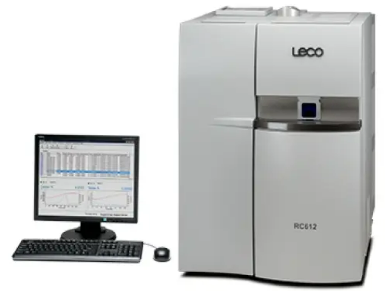RC612 Multiphase Determinator
Carbon and Water Determination
With our RC612, you can determine carbon and water content quickly and accurately. This cutting-edge device determines the amount of carbon and water in diverse organic and inorganic samples, as well as the source of various forms of carbon content. For faster analysis, the RC612 offers a tiny footprint and easy-to-use operating software.

Features
- Complies with the AWS (ANSI) authorised procedure for Moisture Content of Welding Fluxes and Welding Electrode Flux Coverings Determination.
- Analyses, both qualitative and quantitative
- Combustion tube that is simple to install
- Moisture analysis may be performed on a variety of sample types, including powders, flat strips, and tube sections, thanks to the large diameter reaction tube.
- Differentiation between surface, free, organic, and inorganic carbon types
A sturdy 50-position autoloader is available as an option for automated, unattended operation. - Minimize downtime with on-board diagnostics.
Theory of Operation
The RC612 multiphase carbon and hydrogen/moisture determinator determines the amount of carbon and water in organic and inorganic samples, as well as the source of various forms of carbon content.
The RC612 has a cutting-edge furnace control technology that allows the dual-stage furnace’s temperature to be regulated from near-ambient to 1100°C.
Multiple furnace phases can be controlled by the operator and the furnace purged with oxygen or nitrogen, providing oxidising or inert conditions in which the carbon and water present is combusted or reacted, depending on the application. To ensure complete combustion/reaction of all evolved components, an afterburner furnace (nominally set to 850°C) and a secondary oxidation catalyst are incorporated in the flow route.
The outcome is quantified using infrared detection as a weight percentage or as a coating weight (mg/in2).
All types of carbon (excluding certain carbides such as SiC) are transformed to CO2 when combusted in an oxidising atmosphere (O2). Organic carbon, on the other hand, produces both H2O and CO2. Finding synchronous peaks in H2O and CO2 can thus be used to confirm the presence of organic carbon. When the sample is combusted in an inert (N2) atmosphere with the furnace catalyst temperatures at 120°C, water and carbonate are found. Organic carbon is generally not recognised in this mode. The temperature at which additional carbon sources oxidise or volatilize can often be used to distinguish them.
For the study of unknown samples, a slow ramping temperature programme from 100°C to 1000°C at 20°C/min might be employed. This type of analysis can be used to determine the temperatures at which various forms of carbon are oxidised, allowing the operator to fine-tune the furnace temperature programme to get more quantifiable findings for each form of carbon present in this sample type.
